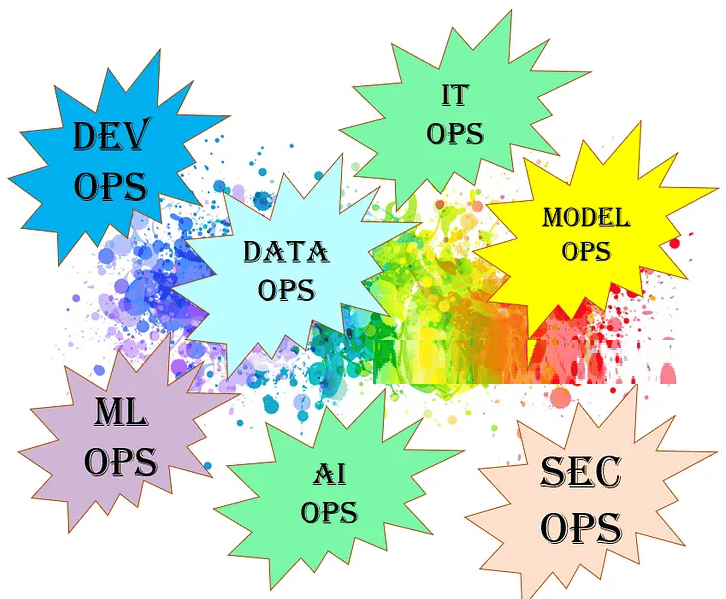Extending DevSecOps to MLOps and DataOps
Explore how extending DevSecOps principles to MLOps and DataOps enhances security, scalability, and collaboration in modern workflows. Learn about key tools, practical workflows, and the unique challenges of integrating security into ML and data pipelines. Discover how this fusion creates resilient, trustworthy systems in an increasingly data-driven world.
DEVOPS
Dr Mahesha BR Pandit
8/11/20243 min read


Extending DevSecOps to MLOps and DataOps
As organizations increasingly rely on machine learning (ML) and data-driven operations, the principles of DevSecOps—development, security, and operations—are finding new relevance. Extending DevSecOps practices to MLOps and DataOps bridges gaps between software engineering, data science, and IT operations, ensuring not only efficiency but also security and scalability across the board.
This evolution represents more than a shift in workflows; it reflects a growing need to integrate security and operational rigor into the heart of ML and data practices.
What Makes MLOps and DataOps Different?
DevSecOps originated in the software engineering domain, focusing on collaboration between developers, security teams, and operations to deliver secure and reliable software. MLOps and DataOps, while sharing similar goals, deal with unique challenges.
MLOps applies DevOps principles to machine learning workflows. It encompasses model training, deployment, and monitoring while addressing complexities like reproducibility and model drift. DataOps focuses on managing data pipelines, ensuring data is clean, consistent, and readily available for use by ML models or analytics systems. Both disciplines must handle vast amounts of data and ensure its integrity, which adds a layer of complexity beyond traditional DevSecOps.
Integrating DevSecOps Principles into MLOps and DataOps
Bringing DevSecOps into MLOps and DataOps means weaving security and reliability into every stage of ML and data workflows. This integration is crucial as data breaches, model vulnerabilities, and biased predictions can have significant consequences.
For MLOps, security concerns arise from handling sensitive data, vulnerabilities in machine learning models, and risks introduced by external dependencies like pre-trained models. DataOps faces similar challenges, including securing data at rest and in transit, ensuring compliance with regulations, and preventing unauthorized access to data pipelines.
By extending DevSecOps practices, teams can:
Automate security checks within ML and data pipelines, ensuring vulnerabilities are caught early.
Monitor data lineage to ensure datasets are trustworthy and have not been tampered with.
Deploy robust access controls, encryption, and compliance checks to safeguard sensitive information.
Tools to Enable This Integration
Extending DevSecOps into MLOps and DataOps requires the right set of tools. Each discipline brings its own ecosystem of technologies designed to streamline workflows while maintaining security and operational rigor.
For DevOps, tools like Jenkins, GitLab CI/CD, and Terraform automate infrastructure and deployment processes. Security tools such as Aqua Security and Twistlock ensure container security, while tools like SonarQube scan codebases for vulnerabilities.
In SecOps, tools like Splunk and SIEM platforms monitor threats, while HashiCorp Vault manages secrets securely. These tools help ensure that systems are protected from breaches and misconfigurations.
MLOps relies on tools like MLflow for tracking experiments, Kubeflow for orchestrating workflows, and TensorFlow Extended (TFX) for end-to-end pipelines. Security for ML models can be enhanced with tools like Seldon Core for monitoring and securing deployed models.
For DataOps, tools like Apache Airflow and Prefect manage data workflows, while dbt (data build tool) ensures data transformation is consistent and tested. Tools like Great Expectations validate data quality, and Snowflake or Databricks provide scalable platforms for data storage and processing.
A Practical Workflow: An Example
Imagine a healthcare organization deploying an ML model to predict patient readmissions. The workflow involves collecting patient data, cleaning and preparing it, training a model, and deploying it to production. Security is critical at every stage.
Using DevSecOps principles, the data pipeline is built with Apache Airflow to automate data ingestion and transformation, secured with tools like HashiCorp Vault to encrypt sensitive patient information. During model training, MLflow tracks experiments, and models are validated for fairness using interpretability tools like SHAP. Once deployed with Kubernetes, runtime security is monitored using Aqua Security, and any anomalies are flagged in real-time. This integrated approach ensures the pipeline is efficient, secure, and compliant.
The Benefits of Integration
Extending DevSecOps to MLOps and DataOps offers tangible benefits. Teams can build secure pipelines that scale with organizational needs while minimizing risks associated with data leaks, model bias, or operational downtime. Automation tools reduce manual intervention, freeing teams to focus on innovation rather than repetitive tasks.
Moreover, this integration fosters collaboration among developers, data scientists, and operations teams, breaking down silos that often hinder productivity. With shared tools and workflows, cross-functional teams can work toward common goals, delivering secure and reliable ML and data-driven solutions faster.
The Path Forward
The fusion of DevSecOps with MLOps and DataOps is not just a trend but a necessity for organizations aiming to stay competitive in a data-driven world. It ensures that the solutions they build are not only cutting-edge but also secure and trustworthy. By adopting these practices, organizations can create pipelines that stand the test of time, addressing the challenges of modern technology with confidence and agility.
As the fields of ML and data science continue to evolve, integrating security and operations into their workflows will be key to unlocking their full potential while safeguarding the interests of businesses and users alike.
Image Courtesy: Medium, https://medium.com/vitrox-publication/differences-devops-itops-mlops-dataops-modelops-aiops-secops-devsecops-part-1-3-8b238cf72942